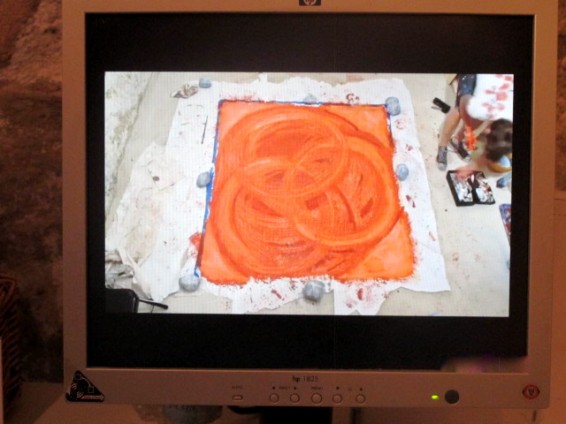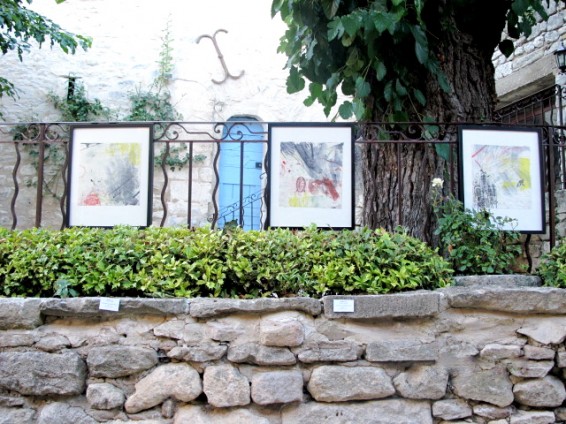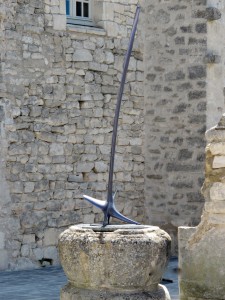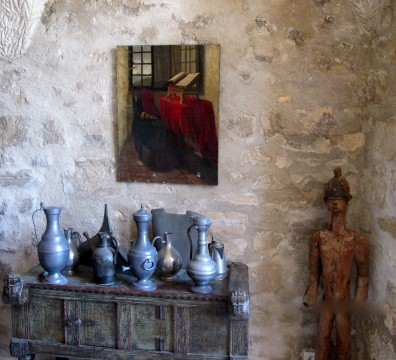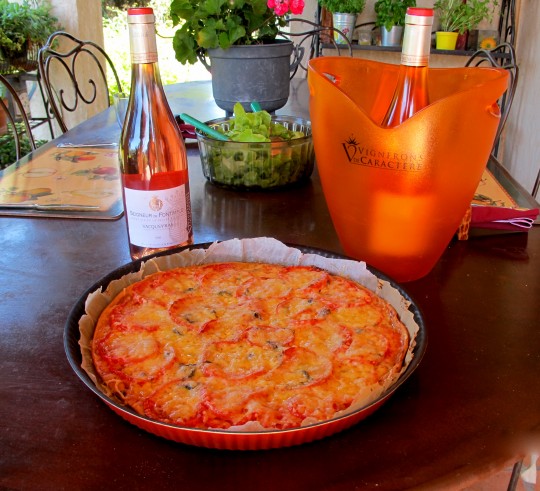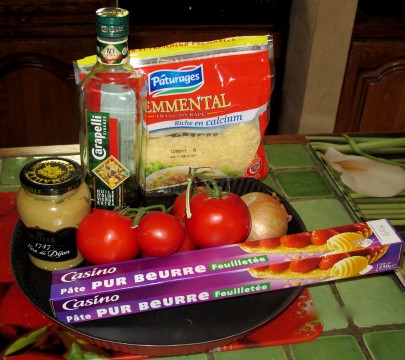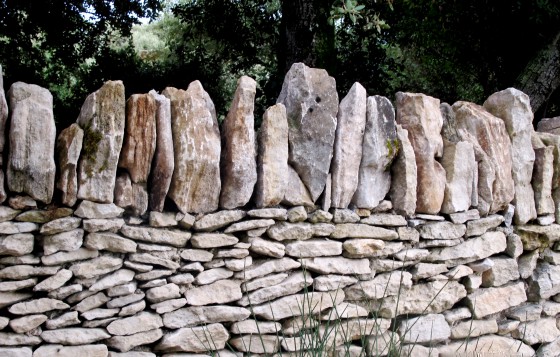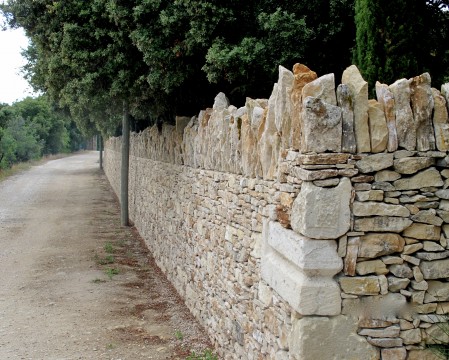
Alexandre Harrell of Roswell NM with art patron Cesar and his purchase of two of Alexandre's charcoal on paper
To your average visitor, Lacoste appears from afar as a tightly-bunched cluster of biscuit-colored stone structures on a steep hillside whereas viewed from ground level it is an anally precise stacking of stone upon stone on four narrow stone-paved streets with colored swatches of flowers and pocket gardens.
Its nude stone structures and somnolent nature belie the buzzing activity behind doors, gates and walls: the engendering of art by students of the Savannah College of Art and Design (SCAD) in Lacoste on nine-week sleepovers with pretty views.

Lenses were ever present. Shannon Schaefer (rt), Savannah GA, poses in studio displaying her extended-exposure digital photographs
In the old village of only 10 acres surface area, this unique campus of honey-stoned structures forms a large hive – an appropriate description for a school whose athletic teams bear the moniker “The Bees.” SCAD’s hive mind infuses students with a communal psychic energy. It’s a cool artsy version of a getaway retreat.
During end-of-quarter expositions, SCAD peels back its protective cover to reveal the warm honeycombs of studios and the sumptuous views from shaded terraces. Among the art works on display at each exposition, some of them are brilliant and unforgettable — making you wonder what fame awaits the kid in a few years — and others are jejune and bad — the conclusion drawn that the winnowing out process is well underway.

Drinks, served on the shaded terrace at SCAD Lacoste, featured wines from the Domaine de la Citadelle
Last Friday and Saturday, more than 400 works – painting, gravure, photography and art history – of 59 students, who spent eight weeks in Lacoste and one week in Paris, were on display at SCAD’s summer term finale.
Backstory: In 2002, SCAD, the world’s largest exclusively arts college where no student ever has to sweat out an organic chem final, assumed control of the art school in Lacoste, originally founded by Bernard Pfriem, an American ex-pat artist. Pierre Cardin, patron of  the arts extraordinaire, purchased the Lacoste château in 2001, and subsequently more than 40 buildings, most of which are renovated and unoccupied except during the summer festival time.
the arts extraordinaire, purchased the Lacoste château in 2001, and subsequently more than 40 buildings, most of which are renovated and unoccupied except during the summer festival time.
When SCAD Lacoste is in session, students and a handful of professors occupying the hive outnumber the old villages’ permanent residents by a ratio of 2 to 1.

Projection of digital images on film by Nicholas Reichard, Columbus OH, an obsessive Ohio State fan headed to tinsel town
An artist born, Pfriem came to Paris on the G.I. Bill in the early 50’s and immersed himself in the Boho scene of intellectuals and artists, and the cult of the surrealists. Lacoste, and its Marquis De Sade imagery of surreal naughtiness, drew him in, and by the late 50′s, the village-in-ruin became a beloved painting that he never would finish.
The iconic free-spirited British-born socialite Maxime de la Falaise took Bernard Pfriem as a lover (she was the one who did the choosing; her list of victims is impressive), and when the ever restless Maxime moved on, Pfriem launched the Lacoste School of Arts, which became associated with his alma mater, the Cleveland Institute of Art.
The dilapidated houses – they had no roofs as that exempted owners from taxes –were easy prey for Pfriem. He bought the old Boulangerie for one refrigerator. Pfriem expanded his holdings by paying $500 for twenty-odd derelict structures. And to think that Calder purchased his first home in Sache for three mobiles – what a rip-off in comparison.

Explaining digital photography techniques to curious visitor. Photos in background include those of the ebullient Michael Metzner, Wellington FL
SCAD, graced with financial resources and fundraising prowess, owns 35 buildings on the hillside below the château, recently completing a major makeover of a spacious building “the Pfriem ruins” (Pfriem is a brand at SCAD) and converting the former stables of the Marquis de Sade outside the village limits into student apartments and studios.
Basics:
Savannah College of Art and Design: website
Lacoste Village: website
Domaine de la Citadelle: website
Note: The fall expo of students’ works will be held on Nov. 18-19th, from 3-7 p.m.; drinks served from 5-7 p.m. on the 19th.





